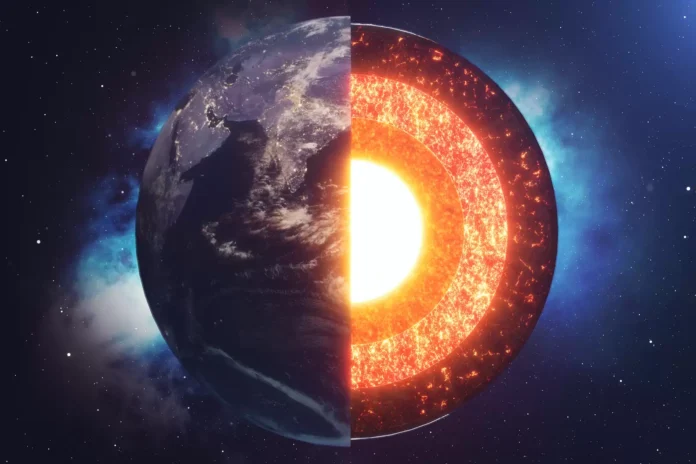Far below the Earth’s surface, thousands of kilometres beneath our feet, our planet’s core seems to be acting a bit unusual. Scientists believe that Earth’s inner core has stopped spinning. But as scary as it sounds, they also say this isn’t the first time it’s happened.
The Earth’s inner core, an insanely hot iron ball roughly the size of Pluto, appears to have stopped spinning, and researchers say it might even be spinning the other way. New research published Monday in the Nature Geoscience journal analyzed seismic waves from repeating earthquakes over the last six decades and concluded that the core’s rotation stopped around the year 2009 and then slowly restarted in the opposite direction.
In a study published in Nature Geoscience by geophysicists Yi Yang and Xiadong Song of Peking University, the two scientists studied seismic wave data from earthquakes that travelled through Earth’s core between the 1960s and the present day. In looking for variations in these seismic waves, researchers were able to observe changes in the Earth’s inner layers.
Data collected by Yang and Song shows that, around 2009, standard variations in seismic wave recordings subsided. According to them, this indicates that the rotation of Earth’s inner core has likely paused. They also noted changes from around the early 1970s that could point to another slowdown or rotation change around that time. The two geophysicists proposed that the Earth’s core can pause its rotation and even reverse its direction in cycles lasting about 70 years.
The liquid outer core of the earth surrounds the primarily iron and nickel-based inner core, allowing it to spin separately from the earth’s rotation.
Yang and Song propose that the magnetic fields on our planet and the duration of our days may be affected by these changes in the core rotation.
They also point out that we probably will not notice these changes or feel their effects in our day-to-day lives.
While the effects of these directional changes above the Earth’s surface are mostly unknown, the study’s authors claim they can observe a consistent pattern in which the core behaves like a swing with respect to the Earth’s surface, changing direction roughly every 70 years.
“We think that the core is, relative to the surface of the earth, rotating in one direction and then the other, like a swing,” Xiaodong Song and Yi Yang, the study authors at Peking University in China, told AFP.
The next rotational change is predicted to occur in the middle of the 2040s, with the previous one occurring before 2009 and taking place in the early 1970s. The majority of the Earth’s core is unknown. It is challenging to investigate because of its tremendous depth below the surface of the planet.


